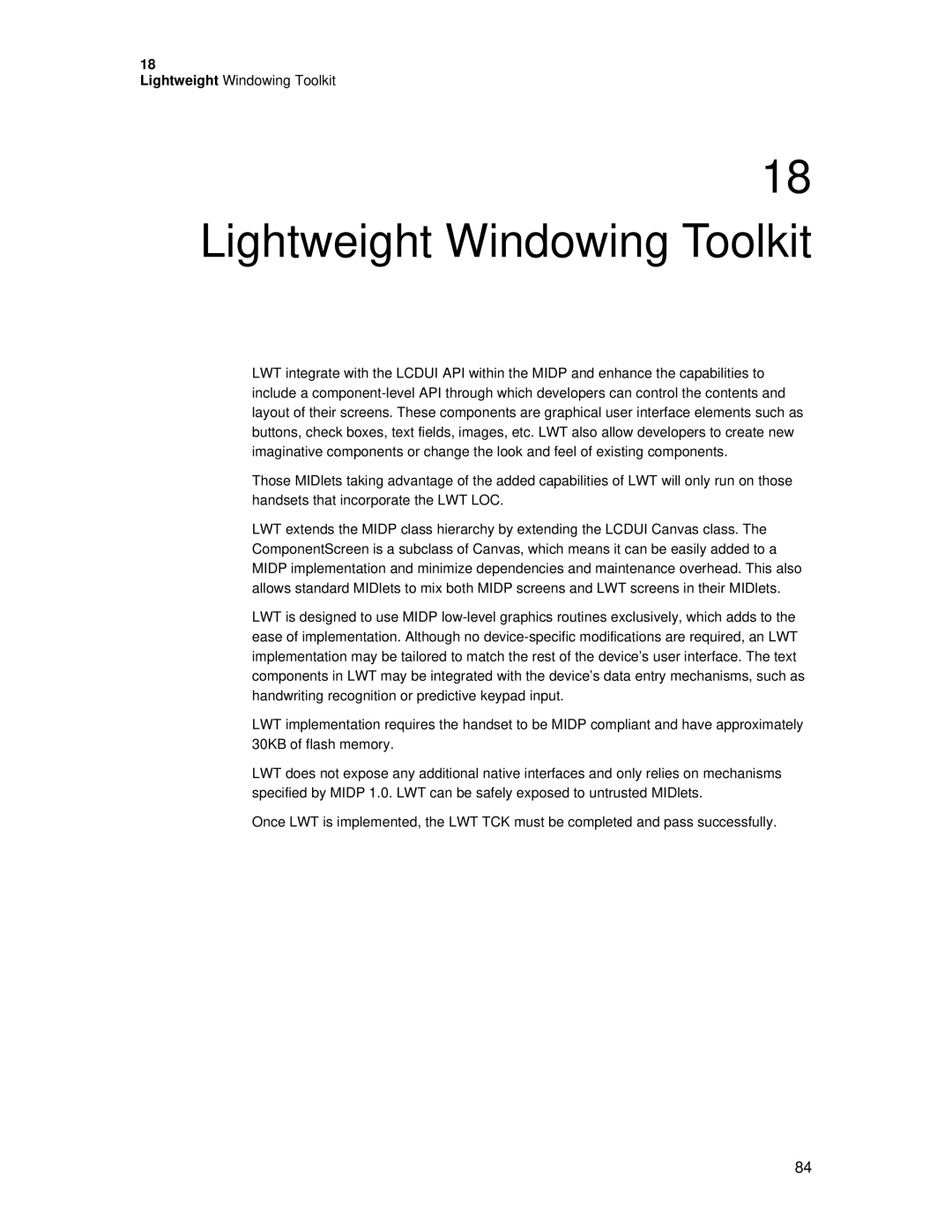18
Lightweight Windowing Toolkit
18 Lightweight Windowing Toolkit
LWT integrate with the LCDUI API within the MIDP and enhance the capabilities to include a
Those MIDlets taking advantage of the added capabilities of LWT will only run on those handsets that incorporate the LWT LOC.
LWT extends the MIDP class hierarchy by extending the LCDUI Canvas class. The ComponentScreen is a subclass of Canvas, which means it can be easily added to a MIDP implementation and minimize dependencies and maintenance overhead. This also allows standard MIDlets to mix both MIDP screens and LWT screens in their MIDlets.
LWT is designed to use MIDP
LWT implementation requires the handset to be MIDP compliant and have approximately 30KB of flash memory.
LWT does not expose any additional native interfaces and only relies on mechanisms specified by MIDP 1.0. LWT can be safely exposed to untrusted MIDlets.
Once LWT is implemented, the LWT TCK must be completed and pass successfully.
84
